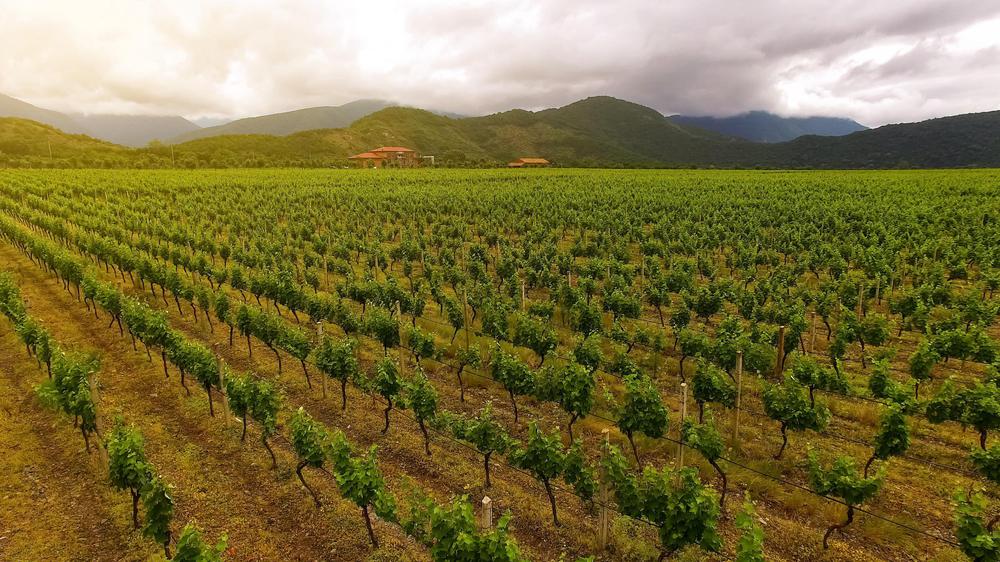Georgia's wine industry, deeply rooted in the country’s rich cultural heritage, has recently been making significant strides on the global stage. In 2021, Georgia ranked 20th among the world's top wine-producing countries, contributing to the global wine production which slightly decreased compared to the previous year, totaling 260 million hectoliters.
Global Position and Consumption Trends
Despite not being among the top wine-consuming countries, Georgia showed a notable increase in wine consumption in 2021, with a 17% year-on-year growth. This trend reflects a growing domestic appreciation for wine, complementing its long-standing tradition of wine production.
Export Dynamics and Market Share
A significant aspect of the Georgian wine industry is its export performance. In 2021, Georgian wine exports reached an all-time high, with Russia remaining the dominant buyer. Other significant markets included Ukraine, Eastern EU countries, CIS countries, and China. Notably, red wine exports have significantly outpaced white wine exports, accounting for 75% of total exports. The majority of this export is red semi-sweet wine, followed by red dry and red semi-dry wines.
Consumer Preferences in Key Markets
The tastes of strategic markets for Georgian wine are diverse. In the USA, one-third of the Georgian wine imported is white dry type. In Poland, the preference leans towards Georgian red semi-sweet, followed by red dry and white-dry wines. This diversity underscores the need for Georgian winemakers to cater to varied palates in different international markets.
Supply Side: Production and Varieties
2020 witnessed a decrease in Georgian wine production by 16% in monetary value, largely due to the Covid-19 pandemic. However, there was a significant recovery in 2021, with a 24% increase in production value. The production landscape in Georgia traditionally favored white grapes, but 2021 saw an increase in the share of red grapes to 32% of the total harvest. The most processed grape varieties include Rkatsiteli, a white grape, and Saperavi, a red grape, which saw an increase in its share by 5 percentage points compared to 2020.
Price Trends in the Market
The average export price of Georgian wine has been on an increasing trend from 2017 through 2019. However, the pandemic and focus on less expensive markets led to a decrease in the average price in 2020 and 2021. On the other hand, the average retail price of bottled wine in Georgia saw a significant increase in 2021 compared to 2020, driven by increased production and marketing costs.
Financial Performance and Forecast
The turnover of Georgian wine producers saw a substantial increase in 2021, with exports accounting for 76% of the share. Profitability metrics indicated a recovery in 2021 after a dip in 2020, with a Gross Margin of 41%, EBITDA Margin of 26%, and Net Profit Margin of 22%. However, the sector remains sensitive to global political and economic factors. The ongoing war in Ukraine and the energy crisis are expected to impact the industry, with a forecasted decline in exports by the end of 2022, followed by a gradual increase in 2023 and subsequent years.
Georgian Wine Production in 2022: A Record Year
In 2022, the Georgian wine industry continued its upward trajectory, with an estimated production of 2.1 million hectoliters (mhl), marking a 2% increase compared to the already large production of 2021. This achievement is attributable to favorable weather conditions that led to high grape yields, coupled with effective governmental subsidy programs that propelled production to record levels.
This growth is significant when considering the global context, where many wine-producing regions experienced fluctuating production levels due to various climatic and economic factors. For instance, while Moldova’s vinified production decreased by 2%, Switzerland recorded a 63% increase in production, benefiting from heat waves across Europe that favored their high-altitude vineyards.
The Georgian wine sector's ability to thrive amidst such challenges underscores its resilience and adaptability. With its strategic focus on both quality and quantity, the industry is well-positioned to continue its growth trajectory and strengthen its presence in the global wine market.
Conclusion: The Road Ahead for Georgian Wine
The Georgian wine industry stands at a critical juncture. While facing challenges like global economic fluctuations and pandemic impacts, the industry shows resilience. Its growing export market, diverse consumer preferences, and strong recovery post-pandemic, coupled with the record production in 2022, point towards a promising future. As it continues to carve its niche, the blend of tradition and innovation in Georgian wine will be key to its sustained growth and success.

 Georgian Wine Exports
Georgian Wine Exports
 The Impact of Georgian Wine on Economic Growth
The Impact of Georgian Wine on Economic Growth
 Georgian Wine Role In International Trade
Georgian Wine Role In International Trade
 Georgian Wine Boom
Georgian Wine Boom




